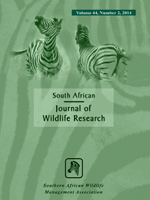The aim of this study was to examine if and how the exposure of indigenous forest edges to flanking exotic pine plantations transform the avian community and forest ecosystem found in the forest periphery. I compared bird diversity indices between forest bordering grassland and forest bordering pine plantation at 10 study locations. At each location, understorey birds were sampled with mist nets at the edge (0 m) and progressively deeper into each forest interior in spring and autumn. Crown cover was measured at these sites in autumn. Crown cover decreased from the edge into the forest, more so in forest bordering plantation, and at 60 m was, on average, 18% lower than forest bordering grassland. Furthermore, in forest bordering grassland, bird species richness and total abundance (of individuals) increased with edge distance in both seasons, but in forest bordering plantation, these trends were absent. In addition, in forest bordering plantation, different dominant species were recorded in spring and species only found in this habitat only fed in the forest mid-stratum. I therefore recommend that plantations be planted 15 m from forest edges to prevent perforation and edge-effect loss that will allow the edge and understorey avifauna to function as a natural part of the indigenous Afrotemperate forest patch in South Africa.
How to translate text using browser tools
1 October 2011
Replacing Grasslands with Pine Plantations on the Karkloof Plateau: The Edge Effects on Downslope Forest Understorey Birds
Gerard Malan
ACCESS THE FULL ARTICLE
Afrotemperate forests
biodiversity
bird diversity indices
edge effects
forest birds
Karkloof
perforation





